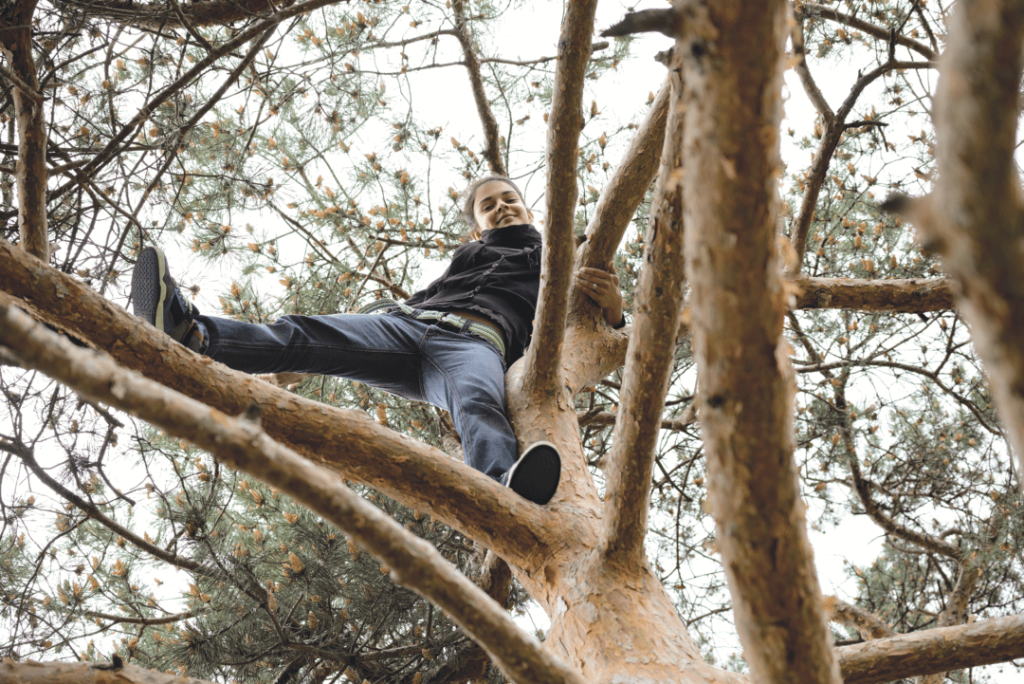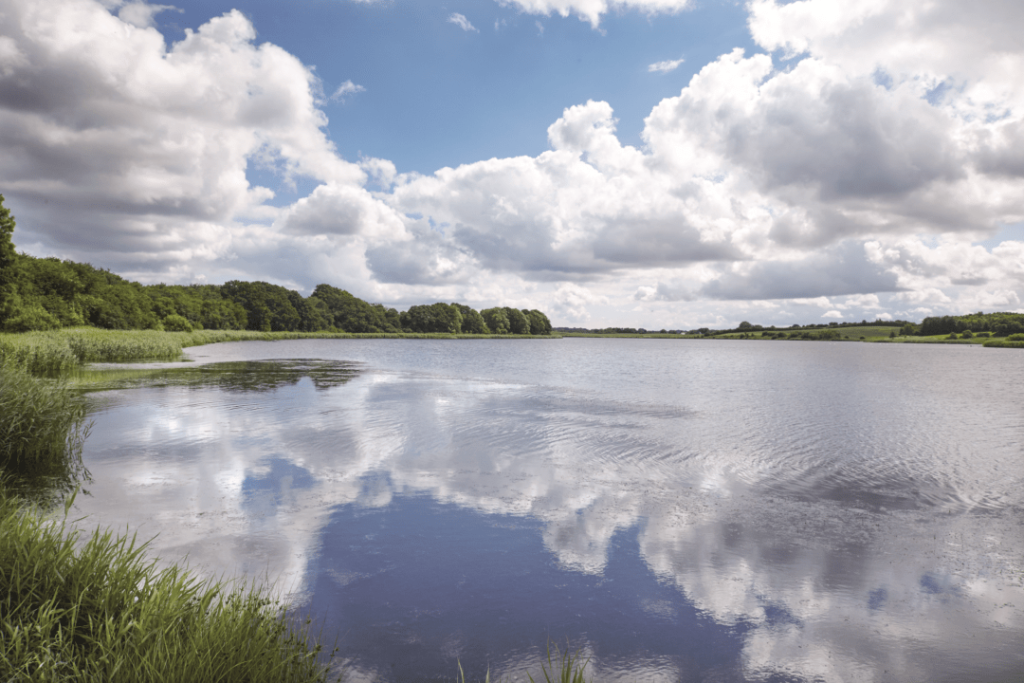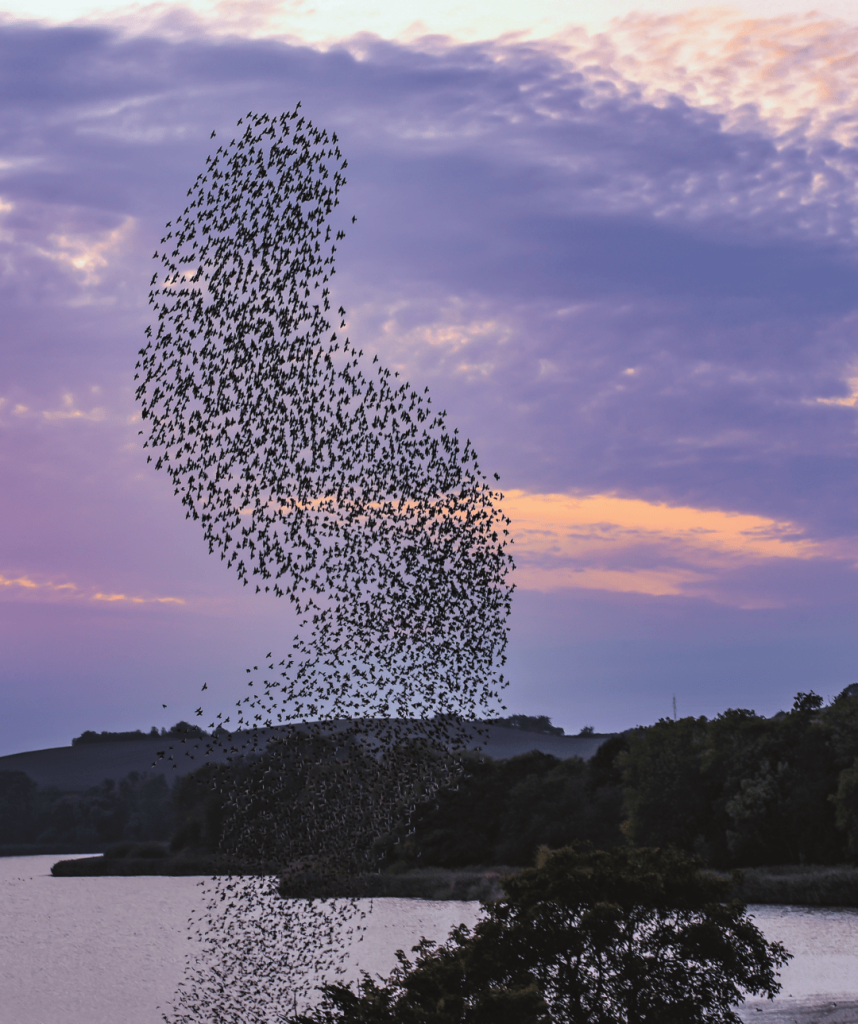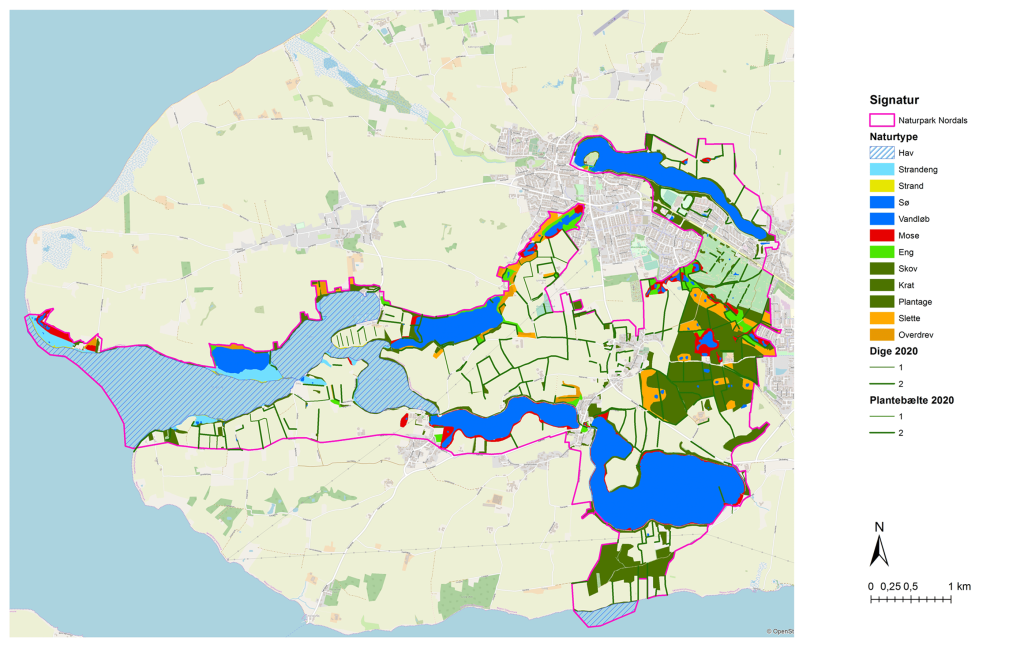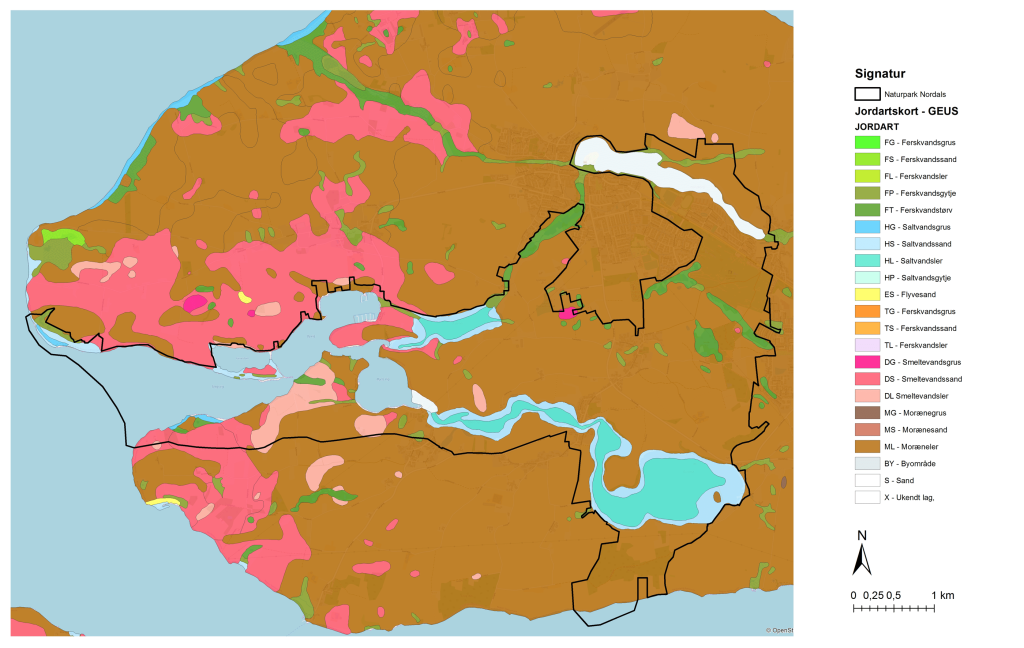Nature
Forests
The Oksbøl forest is a newly planted deciduous forest of 120 hectares. Oak and beech are predominant tree species, while small trees and shrubs such as hawthorn, rowan and bird cherry have been planted at the forest edge.
In the nature park there are many areas on slopes down to the lake and sea with natural forest and scrub. The areas are some of the most important areas in the management of endangered nature.
Lakes
Oldenor, Mjels Sø and Bundsø are restored lakes, which are valuable habitats for breeding sea- and lakebirds, as well as fish.
The Nordborg lake has for many years received wastewater from the city, but has today undergone a restoration.
Animals
According to Denmark's Environmental Portal, more than 350 different species of plants and animals have been registered in the nature park.
Among other things, more than 150 bird species: the kingfisher breeds at Mjels Sø, the sea eagle flies over the lakes daily, and the cormorant has established a small colony in the trees in the eastern part of Bundsø. Herons and vandrikse are seen in several places. Other breeding birds are the seabirds, fjords, shorebirds, whooper swans, meadowsweet, vibe, yellow wagtail and tinsmith.
In the nature park you can also spot the snake, the steel worm, as well as the field- and forest lizard. The nature park is home to eight different amphibians: the leaf frog, butt-nosed frog, large water salamander, small water salamander, toad, pointed-nosed frog and onion frog.
In recent years, at least seven different bats have been recorded. In addition, there are common mammals such as foxes, badgers, hares and deer and wood marten. If you look out over the sea, you can regularly see porpoises, harbor seals and gray seals.
Beach meadows, Overgrazing & Bogs
The nature park contains both large and small areas with naturally native plant communities.
Along the salty, moist and open coasts there are salt marshes - for example at Lønsømade and Farresdam - with a great variety of plants. The meadows are important habitats for birds such as meadow pipes, yellow wagtail, lark and vibe.
In the nature park there are large and small grasslands in the steep terrain along the lakes and coasts and in the edge areas by salt marshes and meadows. The overgrazing is the habitat of many rare plants, animals and insects.
The bog areas are valuable as breeding and resting areas for many waterfowl. In the nature park there are still a few bogs, where there are different species of sphagnum bogs.
Ice Age Landscapes
The nature park's landscape is characterized by the last ice age glaciers. One can experience two large east-west tunnel valleys that the meltwater has formed. One is made up of The Nordborg lake and the valley around Nordborg Bæk, while the other consists of the fjord arm with Stegsvig, Farresdam, Dyvig, Oldenor, Mjelsvig, Mjels Sø and Bundsø. Across they are connected by a small meltwater valley in a north-south direction along Gammeldam under Nordborgvej, past Luffes Plads and further towards Nordborg Castle.
